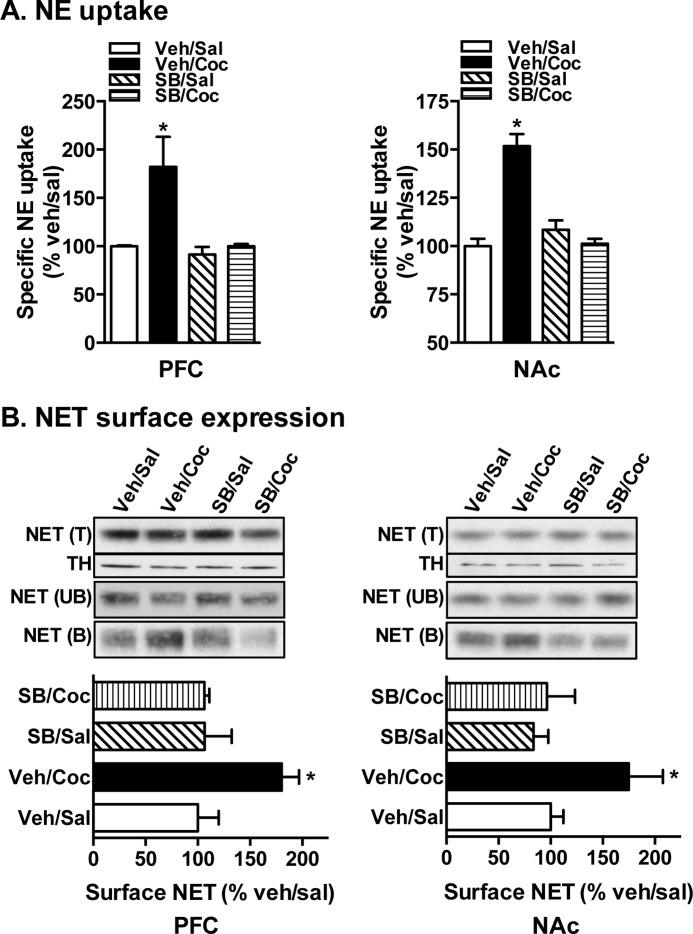FIGURE 2.
Acute in vivo p38 MAPK inhibition blocks cocaine-induced NE transport and NET surface expression in the mouse PFC and NAc. Mice were injected with vehicle (Veh) or SB203580 (SB) (50 μg/kg intraperitoneally) 15 min prior to saline (Sal) or cocaine (Coc) (30 mg/kg intraperitoneally) injections. Brains were collected 1 h postinjection for PFC and NAc synaptosomal preparations. A, NE uptake. PFC and NAc synaptosomes were used for NE uptake assays as described under “Experimental Procedures.” NE uptake data derived from three separate experiments, each in triplicate, are given as mean ± S.E. (error bars). * indicates a significant change in NE transport (one-way analysis of variance; Dunnett's test: F(4,44) = 3.09 for PFC, p < 0.05 and F(4,44) = 5.82 for NAc, p < 0.05). B, NET surface biotinylation. Synaptosomes obtained from drug-administered mice were biotinylated, and biotinylated NETs were isolated by avidin binding. Equal aliquots from total (T) and avidin-unbound fractions (UB) and entire eluates from avidin beads representing bound fractions (B) were loaded onto gels, and the blots were probed with commercially available mouse NET monoclonal antibody as described under “Experimental Procedures.” Representative blots show a NET-specific band at ∼85 kDa. Quantified surface NET densities (normalized to TH levels in the total blot) from three separate experiments are given in bar graphs as mean ± S.E. (error bars). * indicates a significant change from vehicle control (one-way analysis of variance; Dunnett's test: F(4,8) = 5.34 for PFC and F(4,8) = 3.96 for NAc, p < 0.05). TH immunoblots corresponding to total are shown for equal protein loading.

